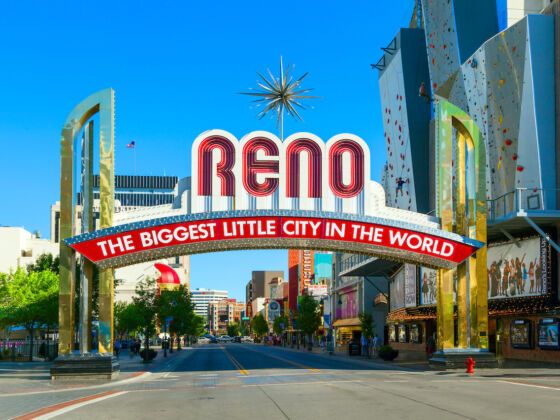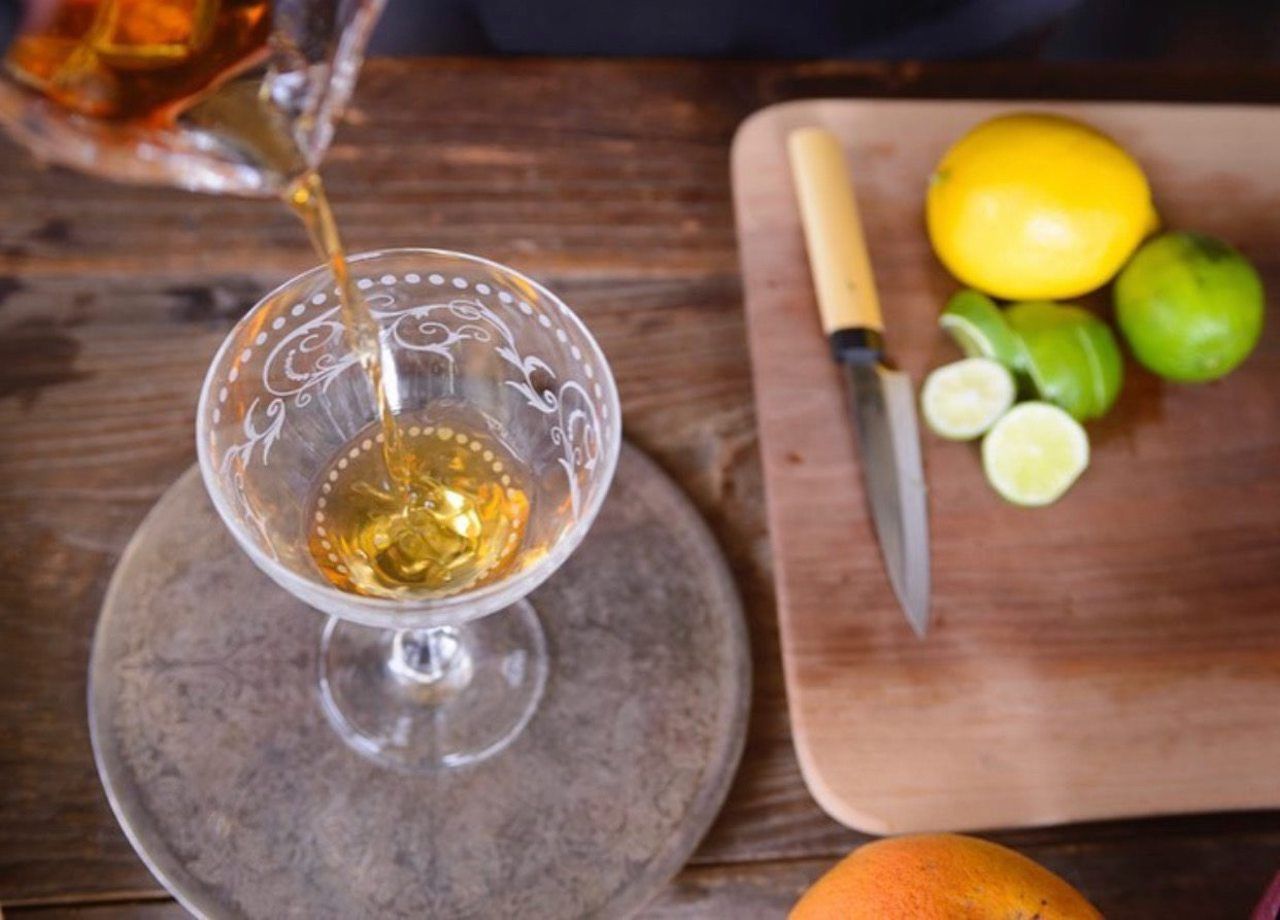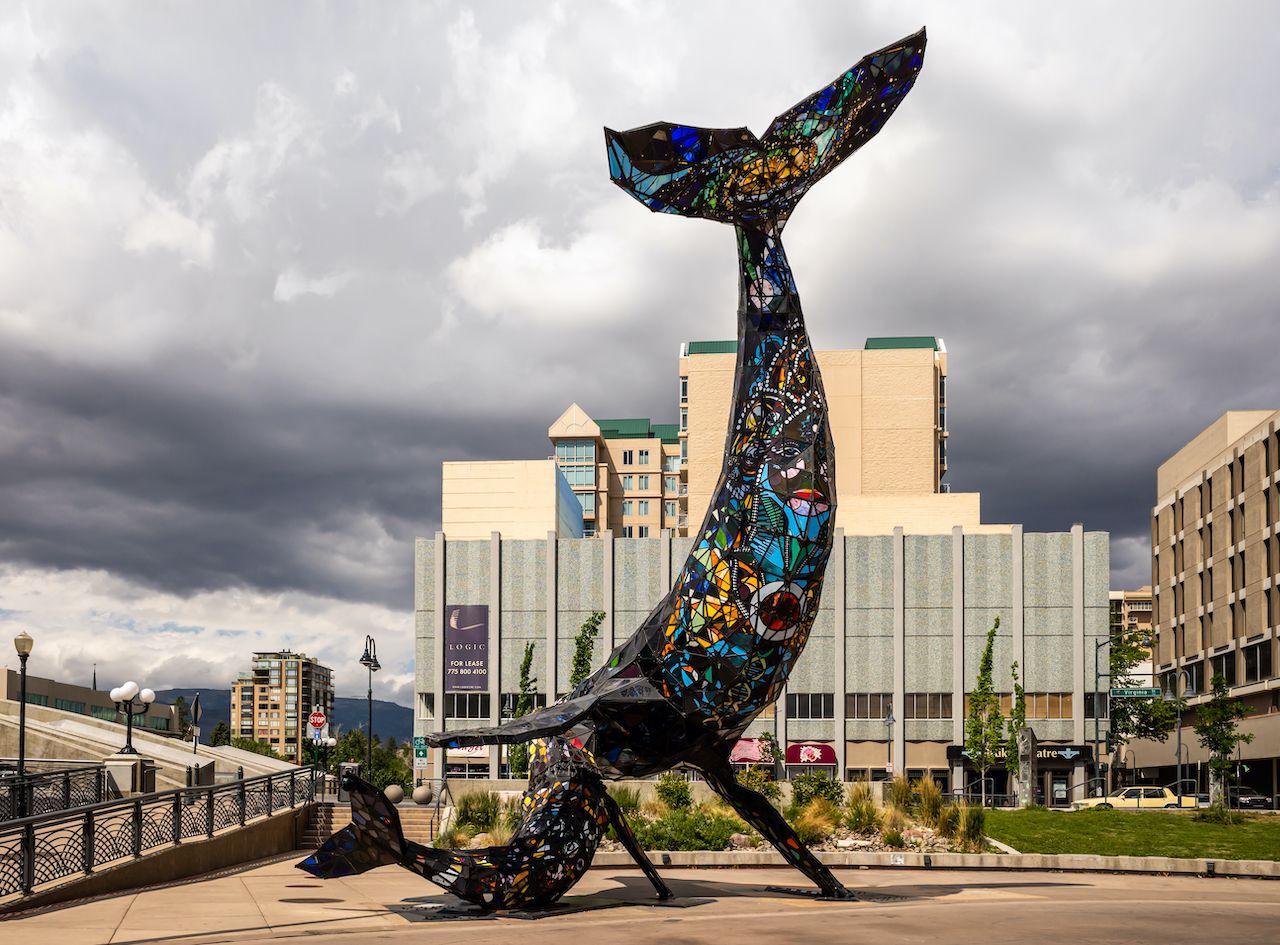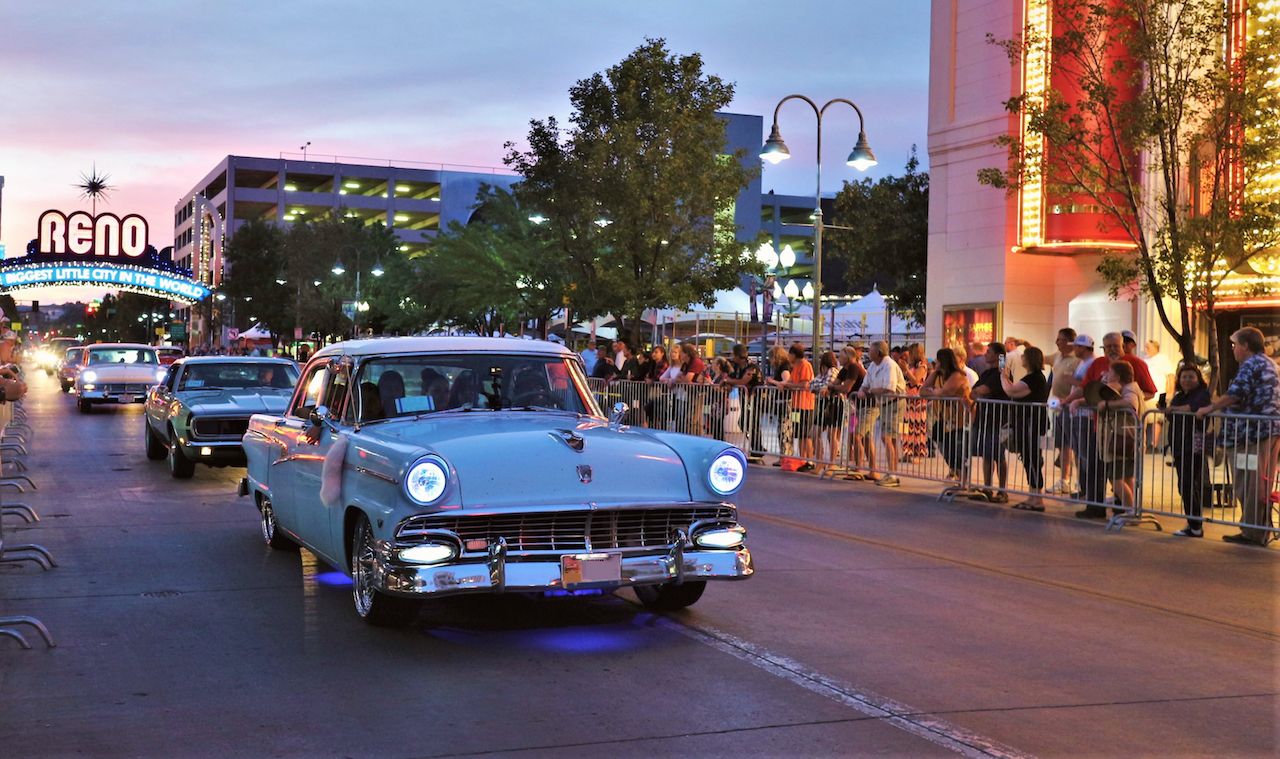The 164-foot climbing wall atop the Whitney Peak Hotel in Downtown Reno is a foothold-studded monument to what Reno has become in the last 10 years: new, active, adventurous, and not in any way focused on gambling. From the top you can see out to the Sierra Nevada Mountains, down over the revamped shops along California Avenue in Midtown, and spot people fishing the Truckee River.
But it still stands among the lights of the city’s famous casinos. And it also still has Reno’s familiar cast of characters strolling below.
While Reno is no longer a punchline, this city full of outdoor activities and artists hasn’t eschewed its quirky ethos either. Reno is still Reno, and though an influx of tech money and creatives have made it a place with a culture outside of the casinos, it’s always going to be a little rough around the edges.



